Reviews
Yabu no naka no kuroneko / Black Cat from the Grove
Kaneto Shindô
Japan, 1968
Credits
Review by Michael Nordine
Posted on 26 October 2010
Source Classic Samurai Movies DVD
Categories 31 Days of Horror VII
Who are you?
The above is the first line of dialogue in Kuroneko, spoken a full ten minutes into the film. A simple question, deserving of a simple answer, and yet the events of the prior scene void this possibility: a band of roving samurai happen upon a small house in a field and sloppily make their way inside to find Shige - to whom the above question is directed - and her mother-in-law Yone eating rice. The patriarch of the household, Gintoki, has long since been called to war, leaving his wife and mother on their own. After taking the women’s food, the samurai rape and kill both of them, set their house on fire, and walk away without so much as a backward glance. Once the flames have died down, the corpses of the two women emerge from the flames strangely intact, and already we are unsure of who or what we are looking at. Moments later, a small black cat walks onto the scene to lick their wounds for an uncomfortably long time, its meows ringing out in the now-empty field.
So who is Shige? The samurai who becomes her first victim is more right than he knows when he facetiously suggests she might be a wandering specter. Over the course of the film, however, she becomes much more: a murderess, an object of pity, and, finally, something approaching a tragic figure. That she does not attempt a sincere response is in fact the most truthful answer possible.
It is sometimes said that we most fear what we don’t understand. But how much are we truly incapable of fathoming, even in the slightest? Every monster and trope present in horror cinema is based on a projection of something we know all too well: Frankenstein’s monster is science gone too far; zombies are the slow-moving embodiment of consumerism; the path to hell is paved with good intentions; and so on and so forth. The relationship between the object of our fear and our comprehension of it might be best described as a sliding scale, and what Kuroneko suggests is that it is in the realm of the uncanny - of knowing yet not knowing something - that true fear lies. When confronted with something simultaneously foreign yet familiar, our usual response is repulsion—and yet we are somehow still drawn to it. This mixed response, seemingly contradictory as it is, is a central component of the concept:
The subject of the ‘uncanny’ is a province of this kind. It is undoubtedly related to what is frightening—to what arouses dread and horror; equally certainly, too, the word is not always used in a clearly definable sense, so that it tends to coincide with what excites fear in general.1
Consider Kuroneko: its eventual villains are also its first victims, and the men they kill are of dubious moral standing themselves. Shindô’s film is one comprised of characters that are neither wholly this nor that: they exist in an in-between state, be it between good and evil, life and death, heaven and hell. Fitting, then, that when Gintoki meets the two women in their new, otherworldly form, he doesn’t know it’s them. “It’s strange,” he says, “you look exactly like my mother and wife, but are dressed differently.” He recognizes them in appearance, but not in spirit, and is immediately uncomfortable. There is a reason for his uncertainty: the two of them, returned from the dead as vengeful onryō, have taken to luring samurai into their home - which only their prey see as more than the pile of ash and rubble it actually is - by feigning helplessness while walking through a bamboo grove in the dead of night. Matters are complicated when Gintoki, now a reputable samurai himself, is dispatched to destroy whatever evil entity is responsible for all the dead samurai showing up in the woods. It is thus a moral quandary that serves as the central conflict of Kuroneko: blood ties versus oaths of duty. Yone and Shige are as duty-bound as Gintoki is; the only difference is to whom their oaths have been sworn.
In the midst of this conflict, something approaching tenderness emerges: a look at the transformative capacity for love, even from a neither/nor sprite born of some netherworld. Despite what this unseen war has done to Shige, it is her love of Gintoki (who, in a land ravaged by battle, somehow returned unchanged, if not better) which ultimately guides her actions. This segment of the film, closer to Mizoguchi’s Ugestsu than Shindô’s own Onibaba, proves a fleeting reprieve from the underlying tension, for the still-beating heart of the film soon reveals itself.
It is a credit to Kuroneko’s complexity that this much has been said about the film with only a passing reference to the war which acts as its catalyst. “Strange things happen in a war-torn land,” a man says in one of the film’s most telling lines, and it’s all too true: everything we see in this movie springs forth from this one sad truth. Yone and Shige’s murderers were half-starved, and no doubt their moral compasses had been irreparably altered by the atrocities they’d witnessed and committed. Not even the dead see the end of war in Kuroneko; it’s a causal link that continues throughout the film, with victims turning into villains into victims until, finally, a man is pitted against his own mother. Gintoki’s ultimate fear arises from his competing desires to help his mother and destroy the wickedness that has turned her into a doppelganger beyond his reckoning.
The result is an almost hallucinatory blend of sight and sound that’s as much a sensory experience as it is a piece of narrative filmmaking. Kuroneko’s horror comes from its slow accumulation of individual moments of unease, from a half-seen reflection to a severed human arm covered in cat fur. Taken on their own, these elements are frightening enough, but it is in their gradual accumulation that Shindô’s subtle mastery over what causes us to take pause is most evident. His lens is one in which light, fog, and shadow dominate the senses and portend doom, an effect amplified by the film’s black and white cinematography—an artistic choice rather than a necessity. It is easy, as a viewer, to get lost in this intoxicating milieu, and yet the characters themselves seem oblivious to it. Have all of them lost their sense of wonder, or have they simply become part of the backdrop? The world of Kuroneko is one of violence juxtaposed against ethereal beauty, and it is thus no accident that what semblance of calm is to be found in the film comes in its first few seconds, when the latter is untroubled by the former.
In the end, snow begins to fall—lightly at first, then enough to cover any and all evidence of the film’s happenings. It’s a stark reminder that, whatever man’s foibles, we are all of us subsumed by the earth sooner or later. What could be more frightening than this final pronouncement on the cold eventuality awaiting us all?
Kuroneko is currently in a one-week engagement at Film Forum in New York City.
- Sigmund Freud, The Uncanny ↩
More 31 Days of Horror VII
-

The Thin Blue Line
1988 -

The Ninth Configuration
1980 -

Scream
1996 -
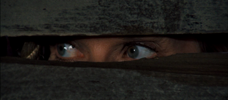
Dying Room Only
1973 -

Brain Dead
1990 -

Zombi 2
1979 -
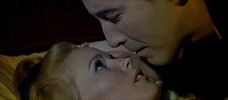
Dracula Has Risen from the Grave
1968 -

The Storyteller
1988-1989 -
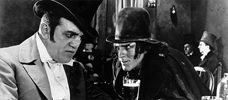
Dr. Jekyll and Mr. Hyde
1920 -

I Know What You Did Last Summer
1997 -
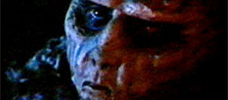
Don’t Be Afraid of the Dark
1973 -

Dark Age
1987 -
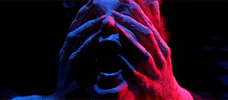
Inferno
1980 -
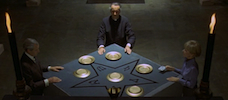
To the Devil a Daughter
UK / West Germany -
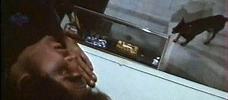
Trapped
1973 -
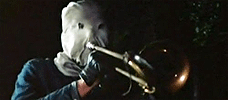
The Town that Dreaded Sundown
1976 -

Halloween H20: Twenty Years Later
1998 -

Killdozer
1973 -
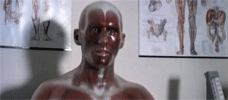
Pin
1989 -

Frankenstein Created Woman
1967 -
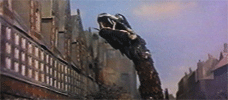
Reptilicus
1961 -
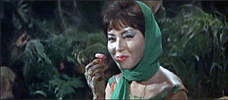
Matango
1963 -

I Still Know What You Did Last Summer
1998 -
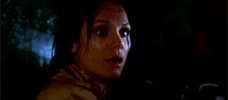
Night Terror
1977 -
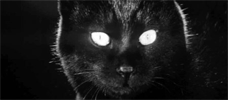
Kuroneko
1968 -

Demons
1985 -
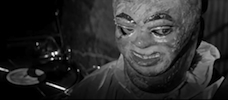
Paranoiac
1963 -
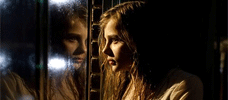
Let Me In
2010 -

The Phantom of the Opera
1925
We don’t do comments anymore, but you may contact us here or find us on Twitter or Facebook.



